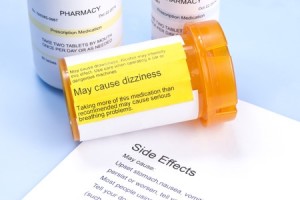Another Empty Promise

I’ve been following the news on the development of a buprenorphine implant for the medication-assisted treatment (MAT) of opioid dependence. An early January 2016 article on The Fix related that a new drug, Probuphine, was scheduled for FDA review on January 12, 2016. Braeburn Pharmaceuticals and Titan Pharmaceuticals jointly developed and brought Probuphine to market. A week later an advisory committee of the FDA recommended approval of the implant by a 12 to 5 vote. The President and CEO of Braeburn Pharmaceuticals was quoted as saying their vision is to “bring change to this underserved population.” But the jury is still out on whether or not that change will ultimately help or harm individuals with opioid use disorders.
Not surprisingly, on May 26, 2016, the FDA announced the approval of Probuphine as the first buprenorphine implant. The main benefit touted seems to be that it provides another way to use buprenorphine. Nora Volkow, director of the National Institute on Drug Abuse was quoted as saying: “This product will expand the treatment alternatives available to people suffering from an opioid use disorder.” FDA Commissioner Robert Califf said: “Today’s approval provides the first-ever implantable option to support patients’ efforts to maintain treatment as part of their overall recovery program.” Is it just me, or do those endorsements seem to be a bit lukewarm?
The first thing to know is that Probuphine was reviewed by the FDA in 2013, and despite recommendations by an advisory committee for approval, it was not approved at that time. The FDA said it needed additional data supporting the efficacy of Probuphine. The executive chairman for Titan Pharmaceuticals said they were “extremely surprised and disappointed” at the action of the FDA. One of the issues then was “human factors testing of the training associated with Probuphine’s insertion and removal.” In other words, 23% of Probuphine patients had implant site adverse events, compared to only 13.5% of the placebo control group. Another concern seems to have been that the Probuphine dose was too low for the kind of patients who were being tested.
Another report on the initial clinical trials indicated that only 8% of patients were opioid-free throughout the treatment, also suggesting the dosage wasn’t adequate. And 25% of the Probuphine-treated patients failed to provide as few as four opioid-negative urine samples over the course of six months. Continued use of illicit substances was not defined as “treatment failure” in the trial, but needing additional buprenorphine beyond preset amounts was. “Overall, 35 percent of the Probuphine patients and 72 percent of the placebo patients in the controlled trials did not complete the six-month treatment course.” Writing for FierceBiotech, John Carroll noted similar concerns—expressed by FDA staffers BEFORE the advisory committee voted to approve Probuphine in 2013.
While the placebo group had even more discouraging results, supporting the conclusion that Probuphine does have an effect on drug use, overall, the response was not what one might hope for, given that the product ensures compliance with medication for six months. It prompts speculation that the dose is simply not high enough. … Potentially, Probuphine could deliver just enough buprenorphine to allow patients to continue to use illicit opioids without experiencing withdrawal when they stop.
A total of 40% to 62% of Probuphine-treated patients needed supplemental buprenorphine; another 11-12% needed supplemental buprenorphine even after receiving a fifth implant. Ironically, one of the voiced advantages for the implant was that the pill and film forms of buprenorphine wouldn’t be accessible to children. The trial was also too small to fully access the safety risks with inserting the implants. Plus there were unanswered questions regarding what happens if addicts never get the implants removed; or how long treatment would continue with the implants; or what happens to patients when they stop treatment. So why did the 2013 advisory committee vote to approve Probuphine with all of these concerns? Carroll provided a link to the full staff review in his article.
The January 12, 2016 FDA report on Probuphine is available here. The trial was revised at the recommendation of the Psychiatric and Drugs Advisory Committee as a treatment for patients stabilized on sublingual buprenorphine at doses of 8 mg or less. The efficacy results demonstrated that the Probuphine-treated patients met the selected margin criteria for non-inferiority. In this study Probuphine was compared to sublingual burprenorphine instead of a placebo. The rationale was that it was inappropriate to expose stable patients to the risk of relapse with a placebo-controlled trial. The non-inferiority margin was the smallest acceptable decrease in effect from that of sublingual buprenorphine. However, the responder rate used in determining the results used a number of assumptions about missing data; and it assumed that using supplemental buprenorphine did not indicate an inadequacy of treatment.
When analyzed under different assumptions, the response rates are lower than reported by the Applicant, and also differ from the expected response rate used to calculate the non-inferiority margin. Therefore, under some sets of assumptions, one might question whether enough of the effect size has been maintained to conclude efficacy of Probuphine. Moreover, because Probuphine ensures compliance, one would expect a clearer demonstration of superiority over sublingual buprenorphine than was demonstrated in this trial.
There were also issues with the data on urine samples. The sampling schedule was less frequent than is customary for efficacy studies. The rationale was that since the population was of stabilized patients, more frequent urine testing could lead to patients dropping out. Only ten samples per patient were to be collected. Nevertheless, 12% in each group missed visits and thus missed giving a urine sample. And 22% (25% in the Probuphine group and 18% in the sublingual buprenorphine group) were missing data from one or more samples because of sampling handling issues.
So even though Probuphine was approved, there doesn’t seem to be an indication that it was clearly superior to sublingual buprenorphine as an opioid maintenance drug. And there are concerns noted within the FDA announcement of its approval. The boxed warning within the medication guide cautions that the insertion and removal of Probuphine can be associated with the risk of implant migration, expulsion and nerve damage. There were additional concerns mentioned by the FDA.
Probuphine implants contain a significant amount of drug that can potentially be expelled or removed, resulting in the potential for accidental exposure or intentional misuse and abuse if the implant comes out of the skin. Patients should be seen during the first week after insertion and a visit schedule of no less than once-monthly is recommended for continued counseling and psychosocial support.
The cost for the implant will be between $1,000 and $1,500 per month, significantly more than the cost of sublingual buprenorphine products. STAT quoted Dr. Carl Sullivan, the director of addiction services as West Virginia University Medicine, as saying: I just don’t see how this is going to help fight the opioid epidemic at all.” Dr. Sarah Wakeman, the medical director for substance use disorders at Massachusetts General Hospital said: “I’d probably still err on the side of prescribing it that way [by tablet or film].”
Some critics don’t think the implant is needed or ready for release. Diana Zuckerman, president of the National Center for Health Research, a nonprofit think tank, said: “We don’t need another product on the market that’s not been tested very well to see how safe it is and how effective it is.” Titan Pharmaceuticals has been trying to get Probuphine approved for over six years, and the voiced concerns about it from abstinence-based recovery go back as far.
In October of 2010, JAMA published an article by Ling et al., “Buprenorphine Implants for Treatment of Opioid Dependence.” Although the study was 24 weeks long, the primary outcome measure was for negative urine samples for illicit opioids during the first 16 weeks of the trial. The rationale for this shortened period was said to because “of the interest in examining early-treatment response in the context of this longer-term treatment.” My question is what were the results of the urine tests for the final 8 weeks, and would they negatively effected the outcome results? The study concluded that: “Among persons with opioid dependence, the use of buprenorphine implants compared with placebo resulted in less opioid use over 16 weeks as assessed by urine samples.”
So it’s not clear that Probuphine has a greater treatment efficacy than sublingual buprenorphine. There are concerns with adverse effects related to the insertion and removal of the implant. There also seems to be a potential for accidental or intentional misuse of the implant, which contains “a significant amount” of a drug that the FDA Advisory Committee report for January 2016 acknowledged is a growing product on the illicit drug market.
Unfortunately, despite these features, buprenorphine sublingual products have been increasingly identified in the illicit drug market, and it is known that they are diverted, abused, and misused. Additionally, they have been implicated in a number of cases of accidental poisonings of small children. Therefore, a depot injection or an implantable product which would be difficult to divert or abuse, and would be less likely to be accidentally ingested by small children, offers potential advantages. In addition, if a depot or implantable product provided a sufficient plasma level of buprenorphine to block the effects of exogenous opioids, the nature of the product would enforce compliance so that patients could not periodically discontinue use to allow the blocking effect to dissipate in order to experience the effects of their opioids of choice.
The clinical trials used to approve Probuphine used sublingual buprenorphine to supplement its dose for some individuals, which neutralizes the rationale of it being less likely for small children to ingest buprenorphine. Adding a benzodiazepine to Probuphine would be a quick work-around for anyone looking to “experience the effects of their opioids of choice.” Trying to remove an implant for the high may seem to be a highly unlikely event. Yet I’ve heard of individuals who would lick or chew fentanyl patches and others who would crush and shoot Suboxone tablets despite the alleged abuse deterrent of it containing naloxone. I even read of one individual who faked a terminal illness to get hospice care for the pain meds.
It won’t take long for stories of removing the implant to get high or sell the drug it contains to emerge. The temptation will be too great for some individuals. Screening for appropriate Probuphine patients will be crucial, but the existing failure to prevent illicit sublingual buprenorphine abuse doesn’t encourage me that will work. And was the question of what happens to patients after implant treatment ever answered? What about people who drop out of treatment after receiving the implant? Probuphine is more likely to become a profitable drug for Titan and Braeburn than it is to bring change to the underserved population of opioid addicts. It seems to be just another empty promise to help the still-suffering addict for financial gain.









